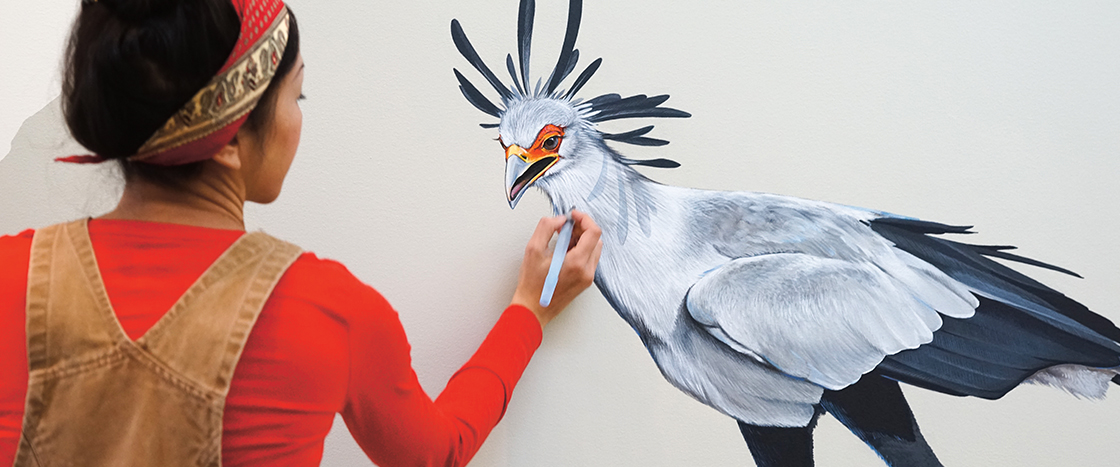What shape are a robin’s feathers? What shade of orange is a monarch butterfly? These are questions that artist Jane Kim thinks about. She paints murals, or wall-sized paintings, of plants and animals.
What shape are a robin’s feathers? What shade of orange is a monarch butterfly? These are questions artist Jane Kim thinks about. She paints murals, or wall-sized paintings. Her paintings are of plants and animals.

